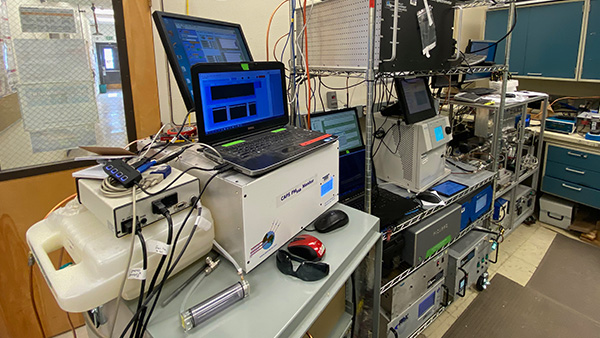Carbonaceous Aerosols: Understanding Water Uptake and Effects on Light Absorption
Fossil fuels and
biomass
fuels emit
carbonaceous aerosol (CAA),
which can absorb solar radiation. Our research measures how water uptake affects the ability of these
aerosols
to absorb light. We also analyze the
optical properties
of wildfire smoke particles. Our new instrument, laboratory experiments, field observations and model parameterizations address critical gaps in understanding
absorption
data collected by ARM and help advance CAA treatments in
E3SM.
This will lead to better understanding of the radiative effects of aerosols and their impact on the Earth.
| Keywords | absorbing aerosols, AI regression model, carbon cycle-CO<sub>2</sub>, clouds, high-latitude feedbacks, methane, precipitation, radiation, smoke, teleconnections, TRACER, tropical CO<sub>2</sub>/CH<sub>4</sub> feedbacks, wildfires |
|---|---|
| TYPE | Project |

Center for Aerosol-gas Forensic Experiments (CAFE) field measurements and analyses are integrated to develop models of aerosol and carbon cycle behavior as well as monitor decarbonization trends that impact climate, air quality and human health. (Image credit: Los Alamos National Laboratory)
Categories













